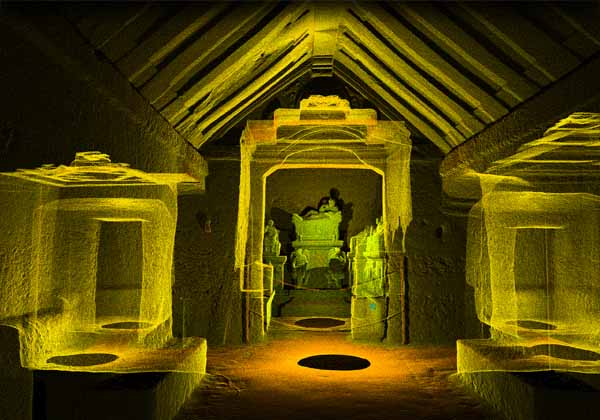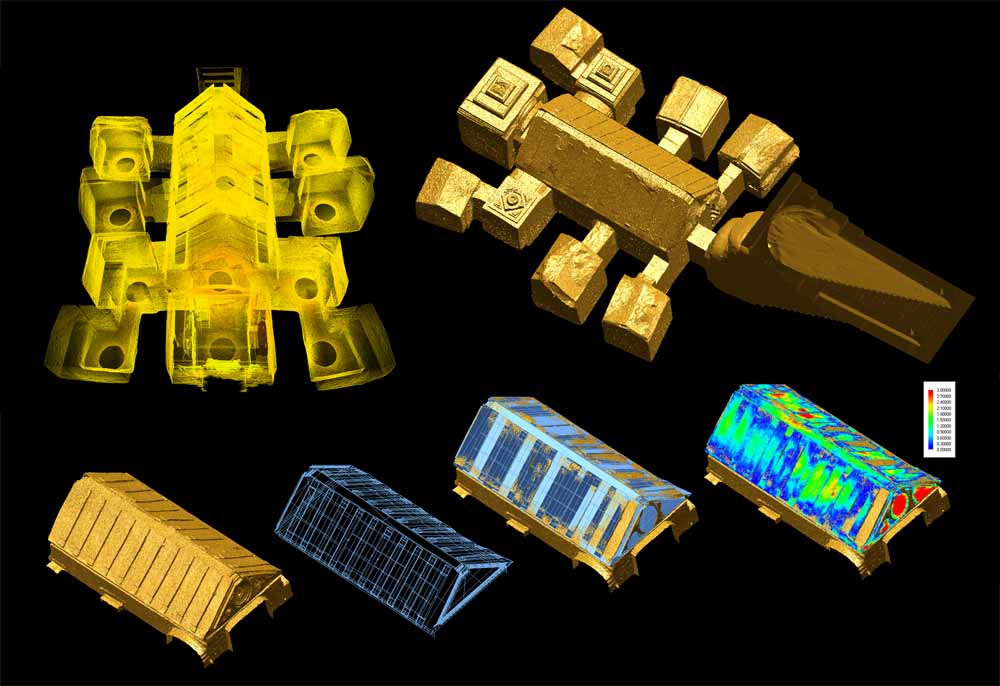The Etruscan Volumnis’ Hypogeum at Perugia (Italy)
last modified
Nov 18, 2009 05:48 PM
The 3D laser scanner survey of the Etruscan hypogeum at Perugia, was carried out in the frame of a degree thesis of the Architecture Restoration Department of the University of Florence. All the necessary research activities were managed in cooperation with the DIAPReM Research Laboratory of the University of Ferrara.
During the field work the acquisition with 1x1 cm grid of the point cloud was carried out in about 14 hours.
The overall aim of the research was to investigate on the exact spatial morphology, the conservative state of the monument itself and to analyse the particular stone ceilings that simulate a wooden carpentry structure. The spatial distribution of the tomb is based on the Roman atrium-house and articulated in ten different enviroments.
Thanks to an accurate 3D laser scanner survey, a complete analysis of local deformation, maybe simulating carpentry members under stress condition, was possible. During the survey, a major difficulty was represented by the narrow corridors connecting the single environments. This problem was resolved by the integration of the 3D survey with accurate topographic data.
Moreover, the insufficient illumination left the texture acquisition for the 3D model quite critical.
The acquired values reflectance turned out to be very homogeneous due to the microflora and condensed water on all surfaces, at a relative humidity close to the point of saturation.
During the modelling process of the acquired data a methodology of evaluation of punctual, local and global deformations was developed by introducing to this object in architectural scale the inspection processing which is normally used for design engineering.
An interesting opportunity of further studies is represented by the 3D mapping and texturing of the 3D digital model in order to achieve a fully realistic representation of the entire monument. An interactive display of the completed model could offer the possibility of visual access to persons with physical handicap. |

|
 |
|




